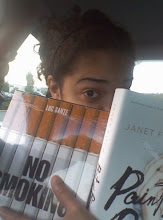
Robert Greenberg Associates
Robert Greenberg Associates is the self-proclaimed “Agency for the Digital Age”. Founded in 1977 by Bob Greenberg ad his brother Richard, R/GA began with the “idea of creating a company that valued design while it focused on developing leading–edge motion graphics and live–action film and video production.” This powerhouse company is a pioneer and leader of digital studios. It is a digital partner that serves world–class brands and Fortune 500 companies. It is a seamlessly integrated digital studio, merging print, television, commercials, feature film, and advertising. Its successes have included 400 feature films, 4,000 television commercials, and over 2,000 awards and individual merits including the D&AD Black Pencil, the Cannes Cyber, Grand Prix, and Titanium Lion, the Academy Award and the Grand Clio Award. It is the most award–winning agency operating in the world today.

Five cornerstones encompass the R/GA vision: planning, creativity, engagement, integration, and accountability. Their well developed vision create experiences that consumers seek out and choose to spend time with, rather than norm of advertising interruption. Their work is engaging, they desire to provide experiences rich, compelling, and useful so that it transforms a consumer’s relationship with a brand. They are true innovators of interactive and visual effects. High profile clients include Verizon Wireless, Target, Nokia, Nike, and Subaru. Their designs are vibrant, energetic, and infuse depth into any 2–D design. Their dimensionality tends to separate their work from the rest of the pack. R/GA is fast paced and fun, and infused with sound, but always appropriate; their believe their model is appropriate for the client because what they do is appropriate for the customer. Their work strives to create experiences as dynamic and passionate as their consumers’ daily lives.
One of their strengths and recognizable methods is multi–channel marketing. Audiences are more likely to be effected by a marketing message if it is consistently delivered across marketing media. One very powerful principle exploited by R/GA. Their use of video, photography, web, print, and graphics is unparalleled. Robert Greenberg explains the importance of successful, in depth experiences by his “two–minute by 120 seconds wide” format. The two–minutes represent a short subject video or game, and the 120–minutes equal the multiplicity of links that lead to additional content and information.

Their work exemplifies what design is about, aesthetics. Their body of work, across the board, is clean, sophisticated, and clear. As true innovators, they have come along to reinvent themselves and what it means to design integrated media. R/GA produces design so engaging it is impossible not to immerse yourself in the experience. They create in order to get the consumer to participate, and growing trend, especially in new media design. I think it’s important that a company stay ever changing, instead of having a trademark solution. Robert Greenberg saw and understood that there is no one perfect solution other than good design and a satisfied customer. They produce work for us, not in order to be recognized. Their trend setting is merely a necessary means to keep up with the constant fluctuation of the consumer society. R/GA has been able to stay number one because they recognize good design requires change, and change is inevitable—so keep up.




